
“The Warren House stood before them under a ragged sycamore, it was almost the loneliest inhabited dwelling in Devon. and its squat, white face peered out upon the wilderness from under a black, tar-pitched roof. The rabbit warrens spread on either hand and the dwelling lay in the protection of a tumulus that piled up to the northward… Indeed the spot was somewhat melancholy and calculated to chill a cheerful spirit. Death seemed to have made this place a home.” – Eden Phillpotts, p.32.
There can be no questions that some of the warreners of Dartmoor’s rabbit warrens lived a hard and lonely life. These ‘metropolises of the conies’ often were located in remote and desolate spots and none such so as the one known as Huntingdon Warren. Located just below the huge western dome of Huntingdon Hill the actual warren house sat at an altitude of some 410 metres above sea level. The warren is wedged in between two main water courses, the River Avon to the west and the Western Wallabrook (AKA the Warren Stream and Huntingdon Stream) to the east. Both uniting at their confluence just to the south thus effectively making a horseshoe-like watery surround for the warren. The nearest town to the warren was Buckfastleigh, a good 7.5 kilometres distant and the nearest neighbour was that of Hayford Hall some 2.5 kilometres away.
A quick glimpse at any OS map will show that mankind was living and dying in the surrounding landscape of Huntingdon since Bronze Age times. Reminders of their occupation can be seen in several nearby settlements along with their hut circles and some of their burial cairns. Sitting high above the old warren house is a huge prehistoric cairn known mysteriously as ‘The Heap of Sinners‘
In much later times there would have been many travellers passing nearby as thy wended their way along the ancient monastic track of the ‘Abbot’s Way‘ and then came the tinners, old men seeking the lodes of tin buried deep below the ground. As time progressed the mining operations became bigger and bigger resulting in at least three mines dotted around the warren. In some respects hungry miners were not the best bed-fellows for the warrener and their tasty rabbits. The same applied to the workers at the nearby Redlake Clay Works. These men would often spend the week on the Moor and so the rabbits were a convenient source of food.
The first mention of Huntingdon although not as a rabbit warren can be found in the Lydford Court Rolls of 1479 when one year previous William Bycote ‘took’ a horse from Huntingdon. There is some contention as to when the first dwelling appeared at Huntingdon, William Crossing suggests that; “A house and a newtake existed here before the close of the seventeenth century.” – p.365. Eric Hemery also agrees with Crossing as in his opinion; “I am inclined to think that a medieval longhouse stood here for which the earliest enclosures-walls were built… Subsequently a small warren was started here and another house built, this is likely to have been a longhouse, although it is impossible to say where it stood as its stones must have been used in the succeeding building.” – p.310. Stanbrook argues that in 1722 ten newtakes on Huntingdon were assigned to a Nicholas Trist and in a settlement document of 1799 that listed all of Trist’s enclosures and dwellings gave no mention of a house at Huntingdon. – p.83.
In 1806 the lease for Huntingdon was sold to Thomas Michelmore who immediately asked the Duchy of Cornwall for a 99 year lease and some extra land. His request was granted in 1809 and with the extra land the acreage of the warren was 585 acres for which he paid £4 7s 8d each year. – pp.78 – 83. When active the warren was worked by Michelmore’s son William and his grandson William Henry and in later years William Henrys’ son-in-law – Jan Waye. The family also employed the services of a Mr. Pearse as a general worker on the warren whose name had attached itself to a nearby landscape feature. Willaim Crossing tells us that the old Huntingdon Clapper got washed away in a flood and Mr. Pearse made an alternative method of crossing the Avon by use of a plank. – p.367. Certainly in letterboxing circles the Ordnance Survey grid reference of SX 657 661 became known as ‘Pearse’s Plank’. Surrounding the warren house were various enclosures and according to the Tithe Apportionment for 1840 there are nine plots attached to the warren house. These consisted of the actual dwelling house, outhouses and gardens (No. 1254), House Park Meadow (No. 1260), Plot (No. 1255), Rock Park (No. 1256), Well Park (No.1257), Moor (No. 1258), Moor (No.1259), Square Plot (No. 1261), Plot above Square Plot (No. 1262). In all there was just over 2 acres of pasture and 5 roods and 31 perches designated as arable land. Hemery says that the ‘Plot above Square Plot’ was the ‘kennel court’ where the warreners dogs were kept in wooden kennels. – p.310.
During the time that Jan Waye was working the warren for various reasons the business began to falter. Hemery suggests two reasons as to why, firstly the growing competition from the larger warrens at Trowlesworthy, Ditsworthy and Headland and secondly the huge losses caused by poachers. He adds that: “Warrening at Huntingdon ceased shortly after the Great World War.” – p.311. Although Hemery gives no date as to when the decline began there several hints given in a local newspaper adverts. The December of 1880 saw advertisements for the sale by private treaty Huntingdon Warren. It was stated that the warren contained 700 acres plus 18 acres of enclosed meadow and pastureland. There was a good dwelling house and convenient outbuildings. The warren also provided good trout fishing with heath fowl living all over the warren, in addition there was an annual compensation payment of 20 guineas from the Dartmoor Fox Hunt for any damage they caused when hunting over the warren. The purchaser would be empowered to either preserve of kill the foxes. The property was held on a 99 year lease from the Duchy of Cornwall of which 28 years was left as of March 1881. In the July 1883 Huntingdon Warren was being advertised as ‘Holiday Quarters’ with good fishing on private waters. In the February of 1888 the warren was advertised as being a well-stocked rabbit warren for let for a term of 19 years. At that time the warren consisted of 585 cares of which 10 acres were enclosed pastureland, a good dwelling house with water supply and the necessary outbuilding. On the 31st of January 1890 the Warren farmhouse was totally destroyed by fire along with most of the furniture, possessions being lost
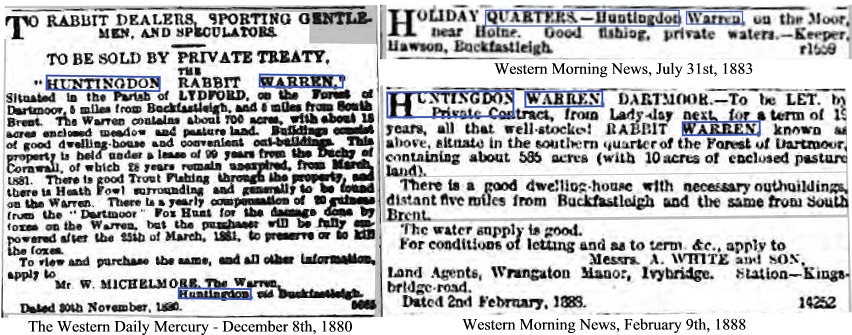
By the early 1940s the Waye family left Huntingdon Warren leaving the house and warren deserted. But the house, although in a state of disrepair did not stay empty for long as in 1942 Frederick Symes better known as Mooroaman moved in and used it as a summer house. It was from ‘The Lonestead’ as he called it that he would roam the moors on his many explorations. In 1956 he too finally left the old warren house as being in his eighties he moved back down to civilisation at Buckfastleigh. Once again the dwelling became vacant and in that same year a group of Naval Cadets decided to use the ruin as a shelter. For whatever reason they decided to build a fire in one of the upstairs rooms and were a trifle too ambitious in their attempts as the fire got out of control and virtually burnt the place down. The final chapter in the warren’s history came in 1961 when due to the dangerous state of the warren house it was completely demolished by means of explosives. – Hemery, p.312. I have recieved a message from Kate Cass (July 2020) saying that the warren house was not demolished by means of explosives. She said; “Mr Percy Waye, Thomas Elliot and Dudley Smith (her father) pulled down the building with a Standard Fordson tractor and a wire rope. This building was deemed dangerous but should those who thought it was dangerous have witnessed the walls being pulled down they would have had a different opinion.” So, nice to have history corrected thanks to Kate and sorry Mr. Hemery – you got it wrong!
Mooroaman was not the only person to take up temporary residence at the warren. In 1909 Keble Martin and some companions began annual summer trips when they would explore the Moor. They built a crude shelter in which they would stay and being men of the cloth it became known as ‘Keble Martin’s Chapel‘ which was located at ‘Mattins Corner’. Today the walls of the shelter are still there along with a stone on which a simple cross had been incised. Being a sanctified place it’s unfortunate that it can be found at Ordnance Survey grid reference SX 666 666.
The mainstay of any rabbit warren are the pillow mounds (know locally as burrows or buries) in which the rabbits live and from whence they can be easily caught. Intermingled amongst the prehistoric settlements and hut circles Haynes estimated that there were at least 80 buries. He also noted that in the main these mounds varied from between 9 and 44 metres long, between 4.5 and 10 metres wide and with heights ranging from 0.7 to 1.6 metres. Most were constructed with their axis running down slope and this number was later revised to 102 mounds. – p.163. A later survey carried out by the RCHME identified a further 14 pillow mounds.
A further issue that a warrener had to contend with was the depredation of his rabbits by natural predators such as weasels and stoats, to overcome the problem a series of vermin traps were built at strategic points around the warren. These were funnel shaped affairs of various designs built from local sources of granite. Haynes identified four traps in the Huntingdon Warren located at OS grid reference SX 6640 6620, SX 6565 6625, SX 6550 66770 and SX 6665 6740. As can be seen from the photographs above many of these buries can easily be identified today on aerial maps.
As mentioned above, one of the biggest headaches for a rabbit warrener was keeping the poachers at bay and Huntingdon was no exception. It did not help matters much that temptation was readily at hand for the men that worked at the nearby Redlake Clay Works. The warrener and his men had to be constantly vigilant around the warren and there were even two shelters dotted around its edges from where they could keep a look-out. Whenever anyone was caught poaching the culprits would usually end up at one of the local Assize Courts and below are just a very few examples of these crimes and in some cases the hefty fines meted out to them –
November 1857 – Samuel Brigwood charged with being on Huntingdon Warren with a gun and firing the same, fined £1 and 13.s 6d.
February 1861 – William Clansey and James Codd charged with trespass in pursuit of rabbits, Clansey fined 7s and 6d and £1 2s and 6d expenses, Codd fined 10s and 14s expenses.
November 1861 – Richard Paul charged with trespassing in search of conies, fined 19s. including costs.
December 1861 – Thomas and Edward Elliot charged with poaching, fined £2 and £1 15 s. 6d. – William Lang charged with trespass in pursuit of game, fined 10s and 7s and 6d expenses, he refused to pay and was sentenced to 14 days hard labour.
January 1885 – Thomas Richards, William Thomas and James Willcocks charged with poaching rabbits, Willcocks find £ and the other two £3 each.
January 1886 – Charles, William and Richard Michelmore along with James Horton charged with ‘using certain engines for the purpose of poaching. They were caught with several nets around a barrow and a ferret, find £5 each including expenses. It was noted at the trial that at this time there were over 3,000 rabbits in the warren.
Although not directly associated with the warren there are two christian crosses to be found around the warren. The first is an ancient granite cross known as Huntingdon Cross. This is said to be a wayside marker for the old Abbott’s way or alternatively a boundary point of Brent Moor. The second cross is much smaller and certainly more modern and comprises of a small aluminium plaque with a cross shape punched into it, this is mounted on a boulder just west of the warren house at grid reference SX 6643 6681. This is a commemorative cross in memory of the crew of a Douglas C-47 Skytrain who lost their lives in a crash. The plane and crew of 7 airmen of the 484 Air Service Group were flying to Exeter on a passenger and mail drop on the 13th of October 1945. During the flight over Devon the weather began closing in and so the pilot asked the Flying Control Officer at Exeter if there was another airfield in which he could land. He was duly told that he could land at Westzoyland in Somerset and was given the magnetic heading of the airfield – 235 degrees. For whatever reason this was completely wrong and was 180 degrees out but the plane headed off in that direction. At 16.10 the plane and crew were enveloped in dense thick mist and flying over Huntingdon Hill where due to the poor visibility they crashed into the hillside just near to the farm house. – Lewis, pp.158 -161.
On a lighter note, many of Dartmoor’s rabbit warrens had guide stones placed along the tracks leading to them. Huntingdon Warren was no exception and one such stone in particular is located halfway between Lud Gate and the warren. It’s known as either the ‘Small Boy’ or ‘Kit’s Stone’ and according to an old tale ‘Kit’ worked at the Huntingdon Mine and was returning home after a day’s grind along with a slight detour into the rabbit warren. He had learned that the warrener was away for the day so took the opportunity to avail himself of the ingredients for a rabbit stew supper. Unexpectedly he met the gamekeeper who immediately spotted that his bulging coat pockets were looking suspiciously full and demanded to know their contents. Kit said nothing and just stood with his head bowed. The warrener stared at him and then noticed the shabby and threadbare jacket that Kit wore. The man’s demeanour changed from one of aggression to one of unexpected empathy and with an act of ‘supposed‘ charity offered to swap his warm coat for the rag that Kit was wearing. At first Kit declined this generous offer but in the end reluctantly accepted the offer. As the warrener took of his coat Kit took the opportunity to remove the two rabbits from the lining of his pockets and stuff them down his trousers. Having exchanged the coats Kit rapidly set off for home not daring to look behind himself. The following day on his way to the mine Kit once again crossed paths with the warrener who was understandably not in the best of moods. “you conned me yesterday,” he growled, “I though I should find rabbits in your coat but there were none!” Kit, with an cheeky grin on his face replied, “you’m shud a swapped breeches as well, then ‘e ‘ud ‘ave found wat ‘e were arter.” Presumably this event took place near the guide stone which then became as ‘Kit’s Stone’. As to the origin of the alternative name of the ‘Small Boy’ I can find no record.


Crossing, W. 1990. Crossing’s Guide to Dartmoor. Newton Abbot: Peninsula Press
Haynes, R. 1970. Vermin Traps and Rabbit Warren on Dartmoor. PM Archaeology No.4
Hemery E. 1983. High Dartmoor. London: Robert Hale.
Lewis, G. 2016. Wings over Dartmoor. Camelford: Leesthorpes Publishing.
Phillpotts, E. 1923. Children of Men. London: William Heineman Ltd.
Stanbrook, E. 1994. Dartmoor Forest Farms. Tiverton: Devon Books.
 Legendary Dartmoor The many aspects past and present of Dartmoor
Legendary Dartmoor The many aspects past and present of Dartmoor

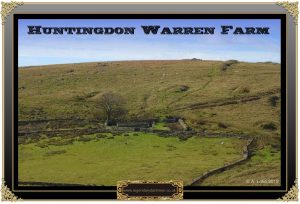
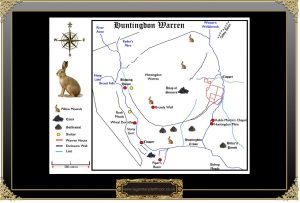
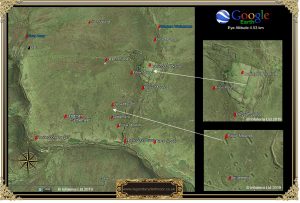
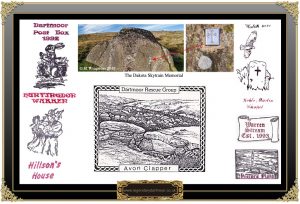
the warren house was not demolished by explosives, it was pulled down with a standard fordson tractor and a wire rope.
This building was deamed dangerous but i’m shore if they had witnessed the wall being pulled down they would have a different opinion.